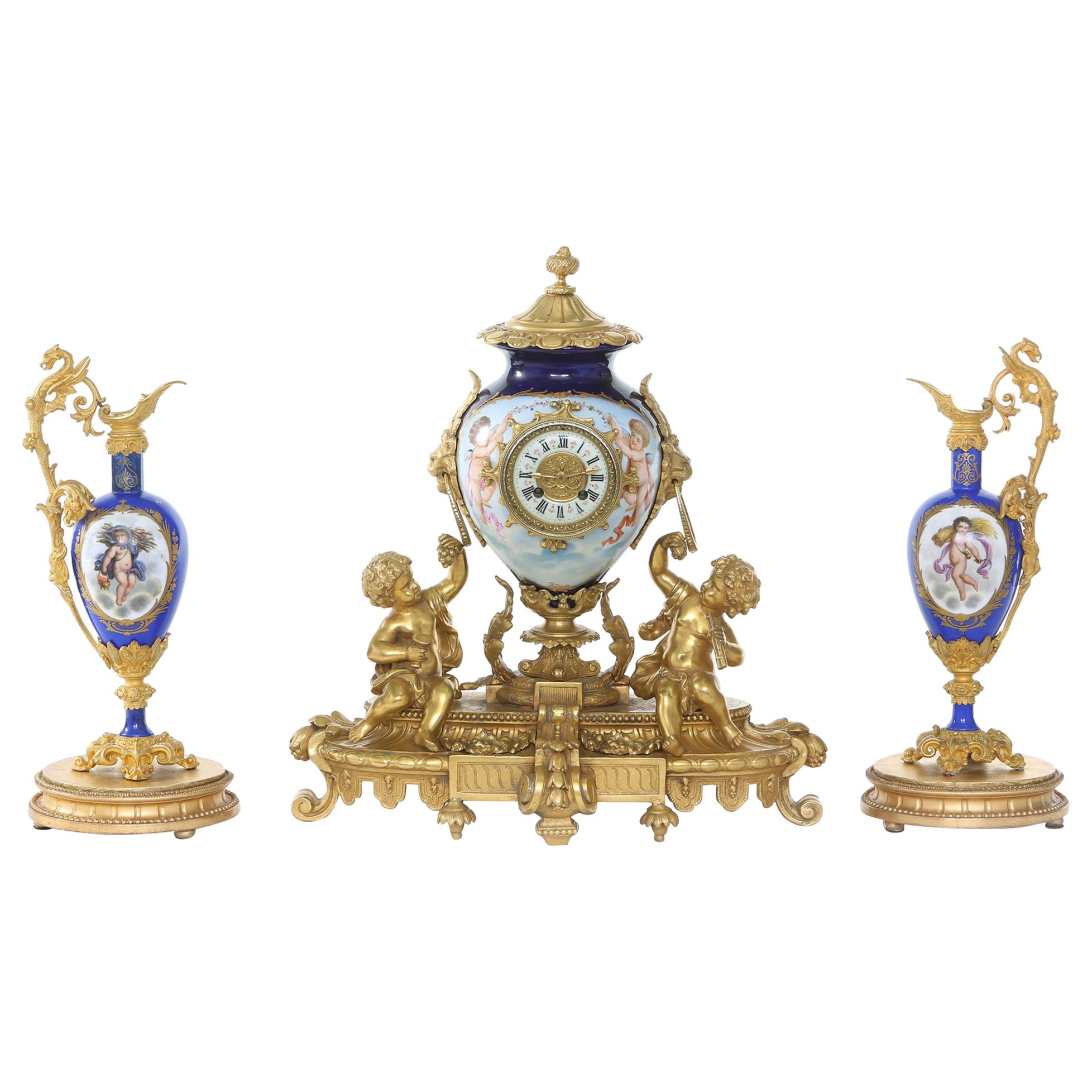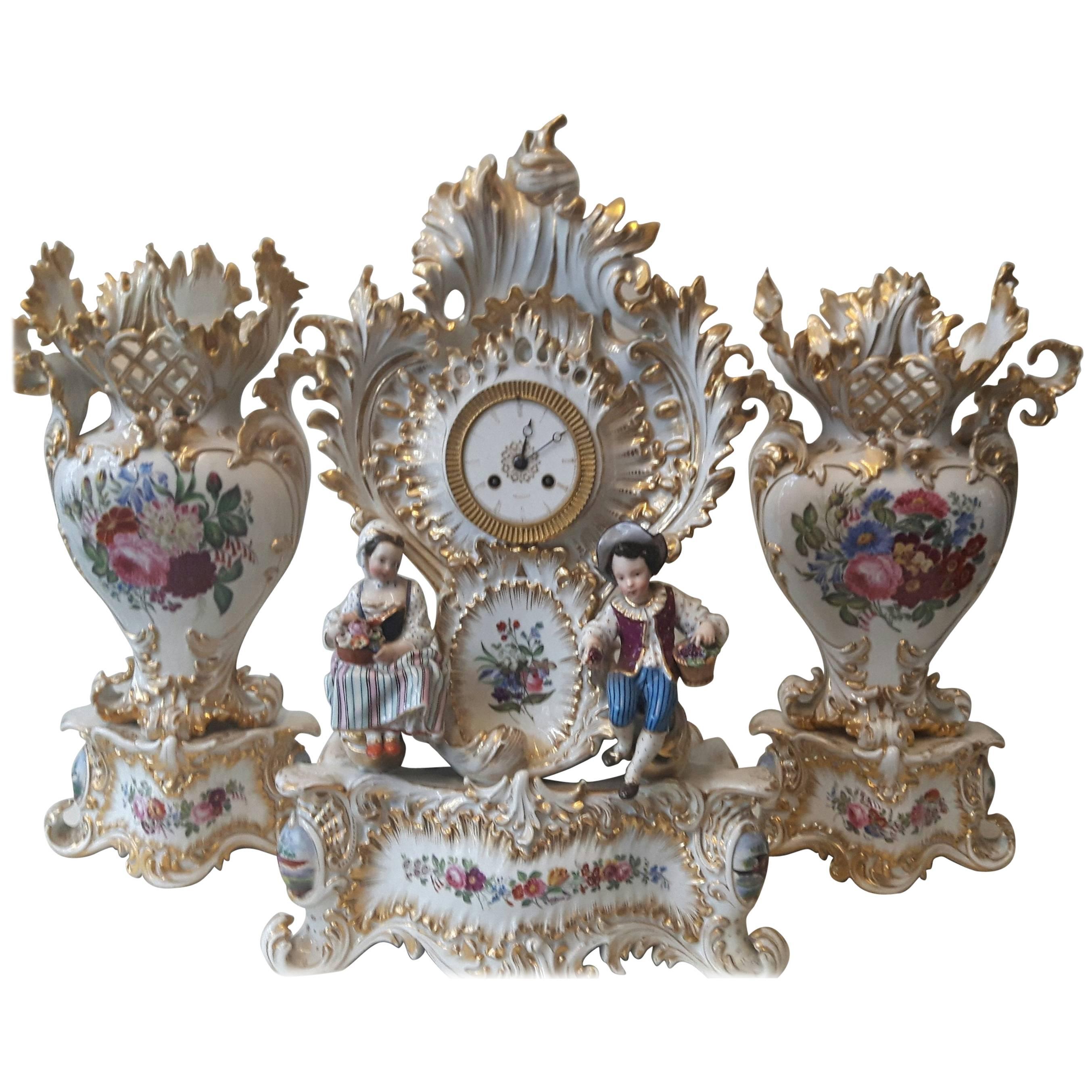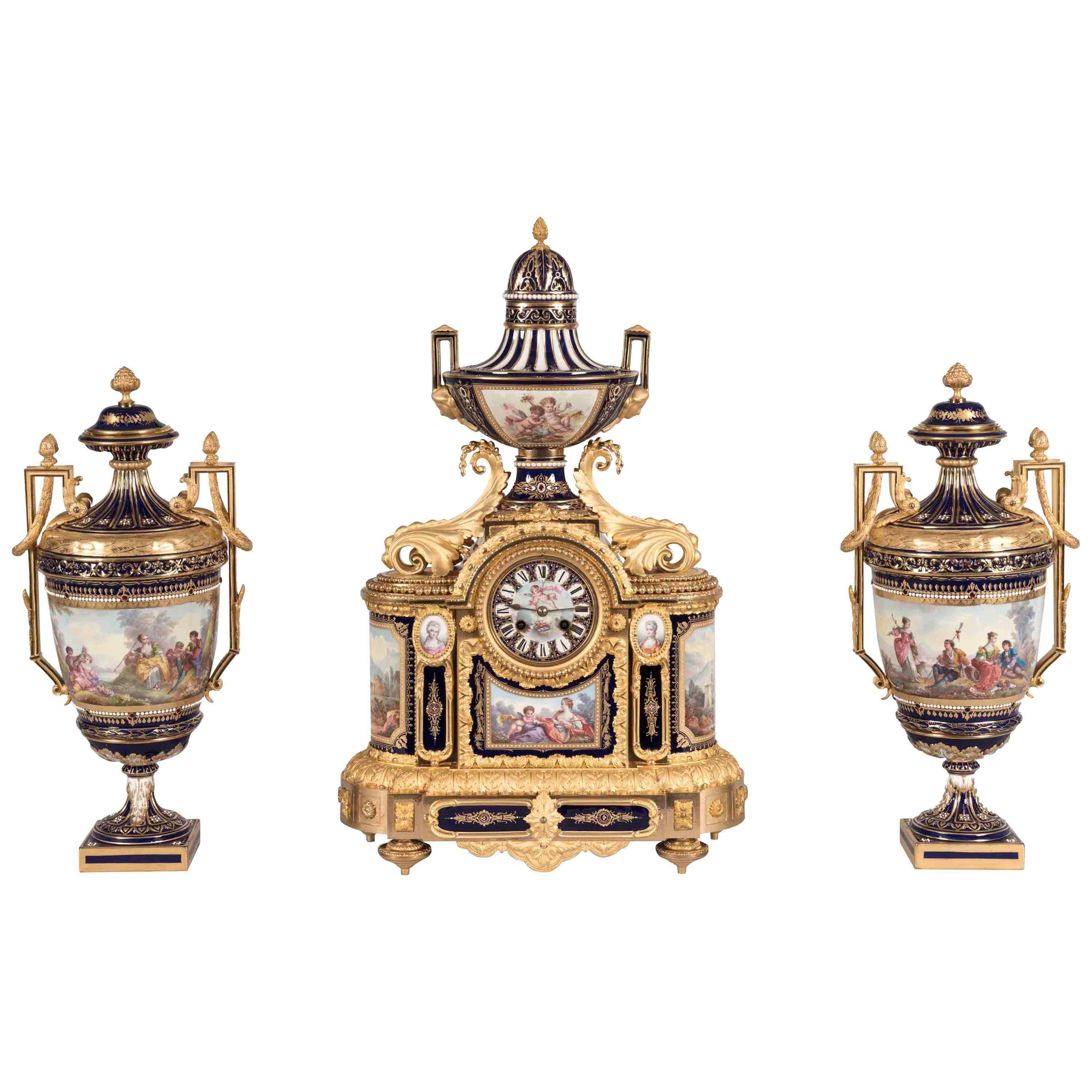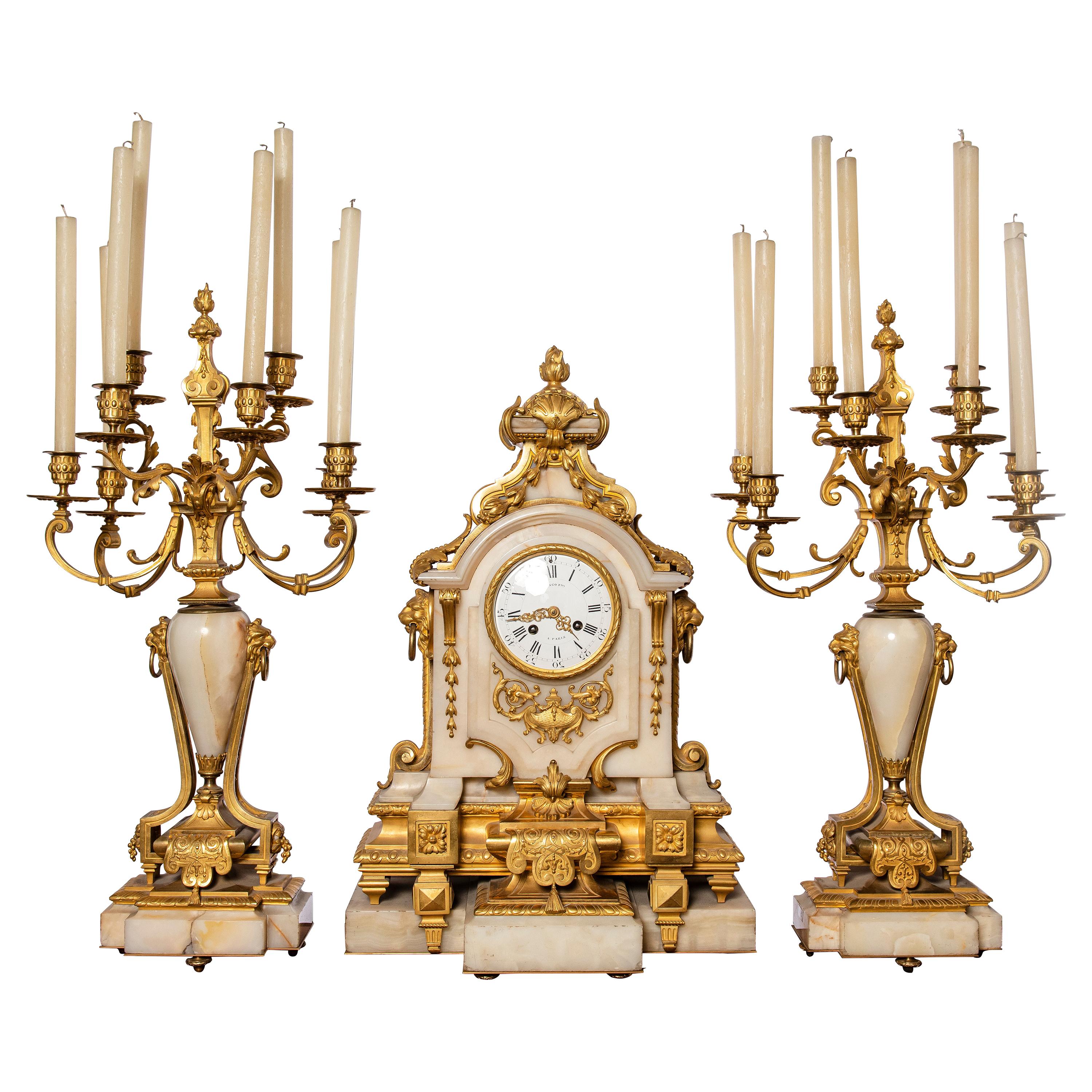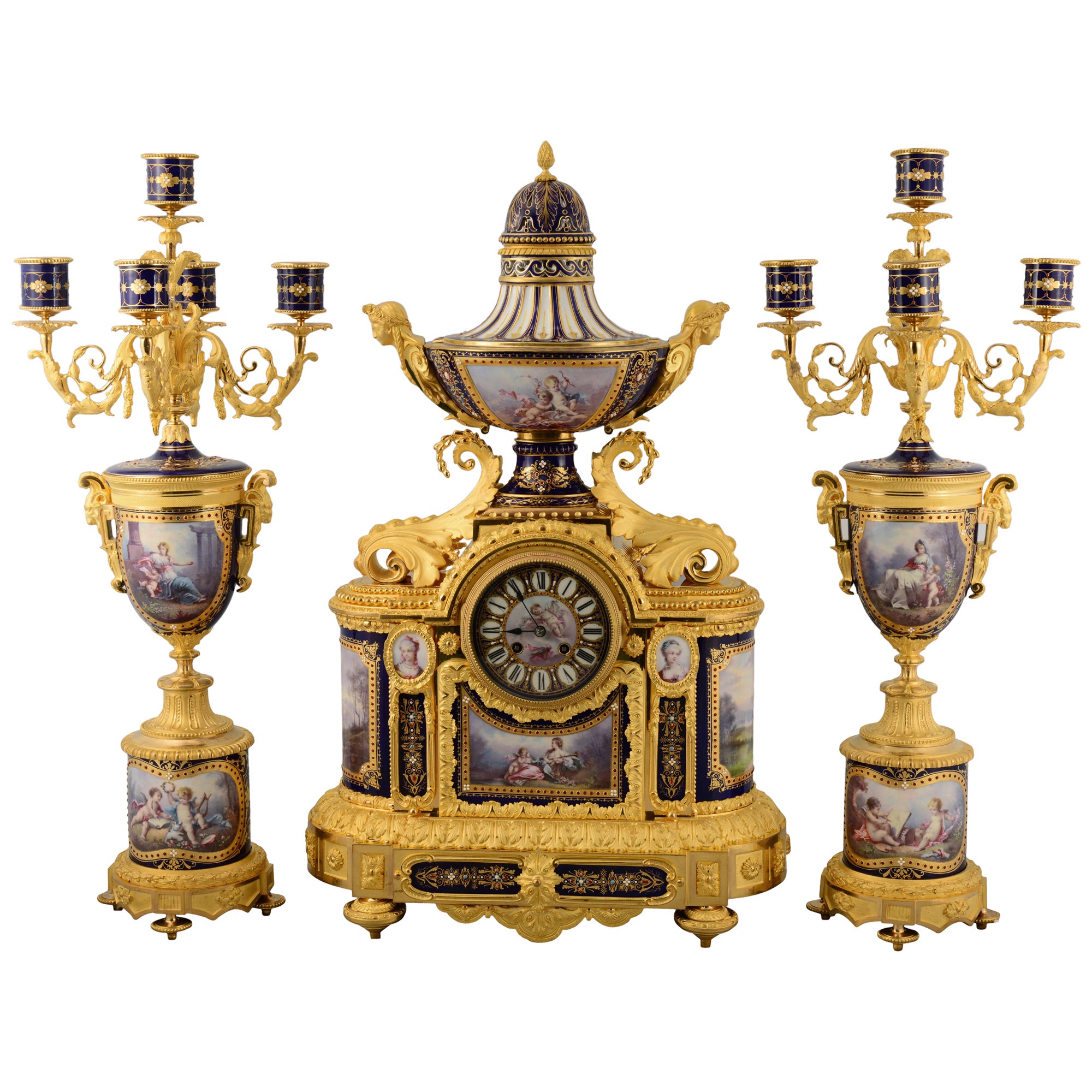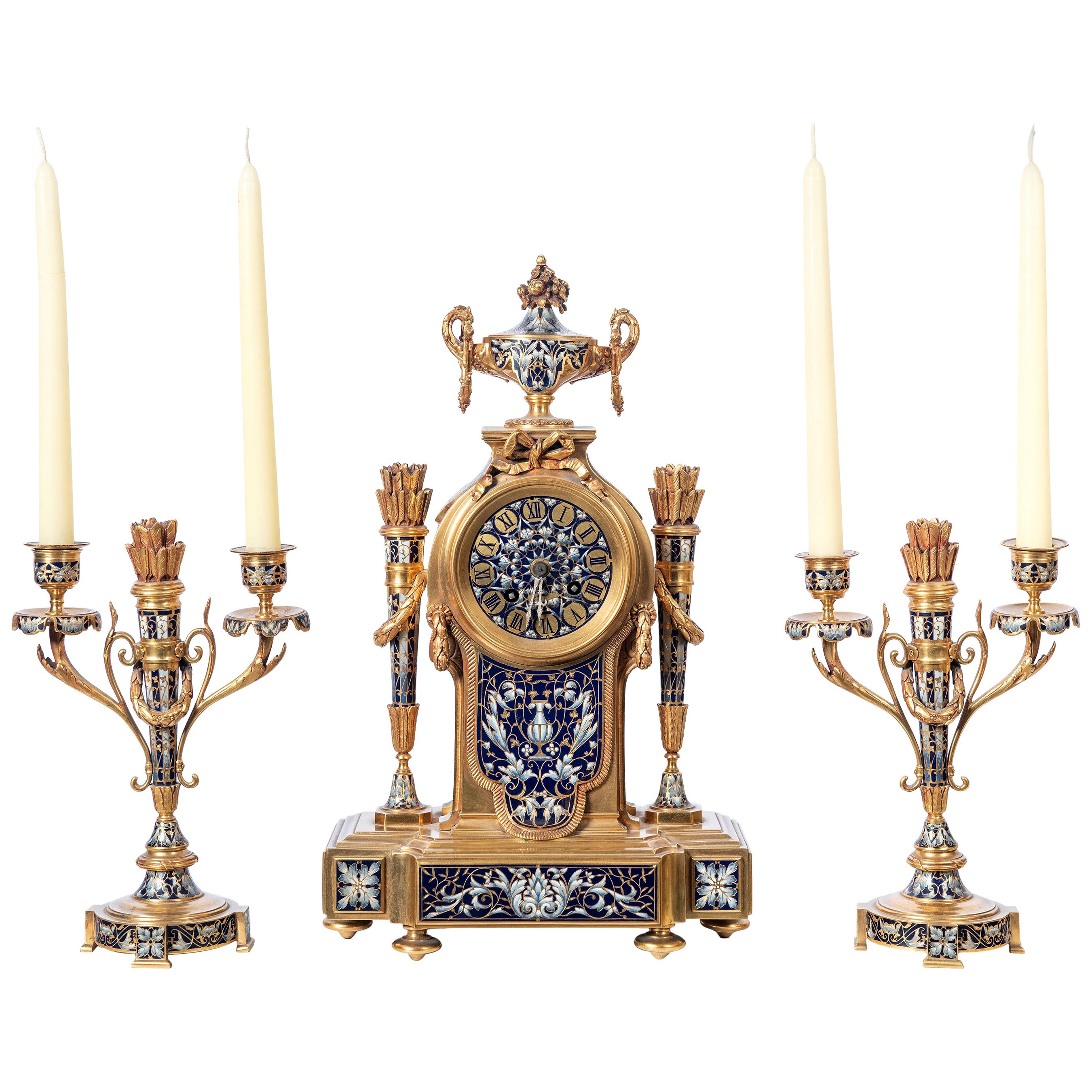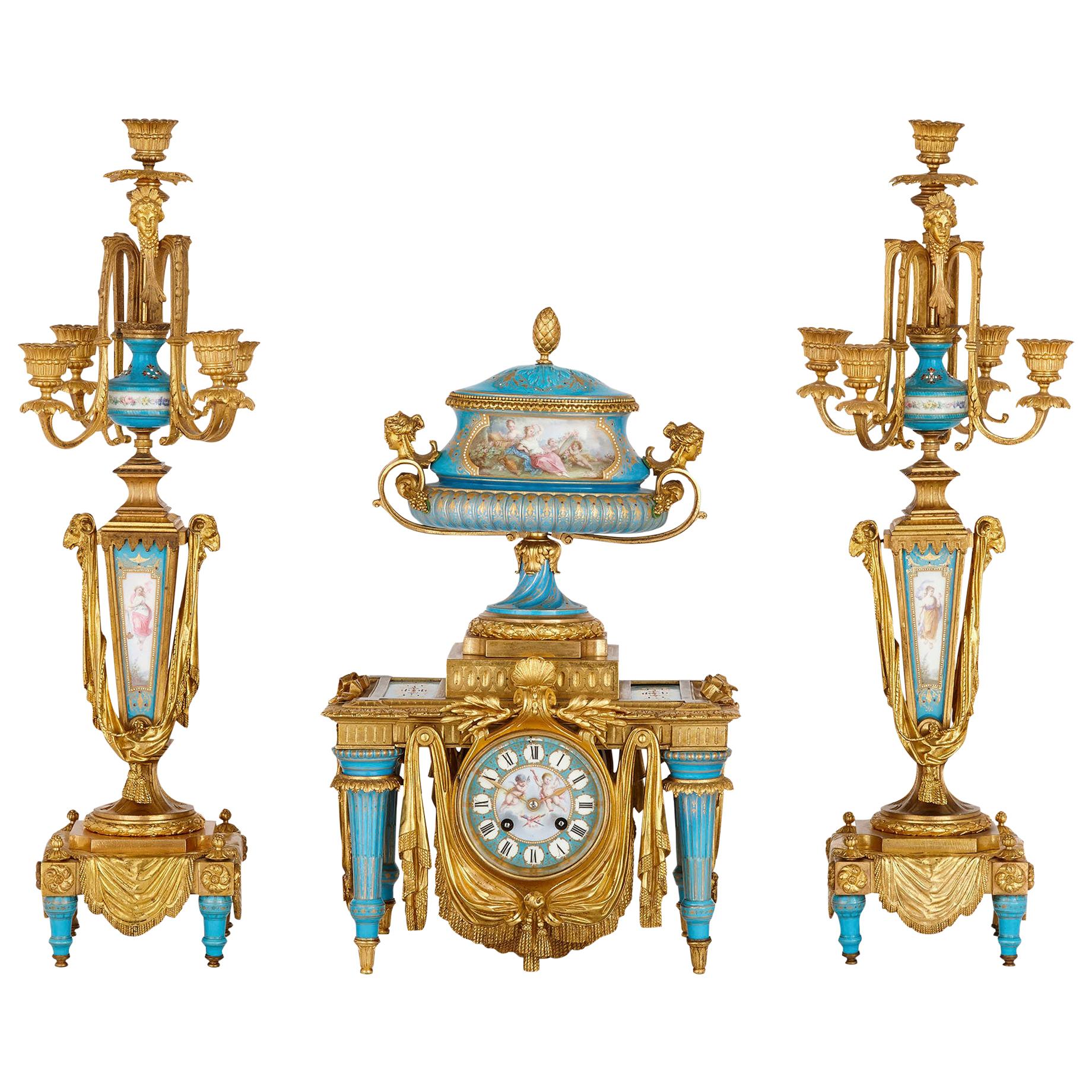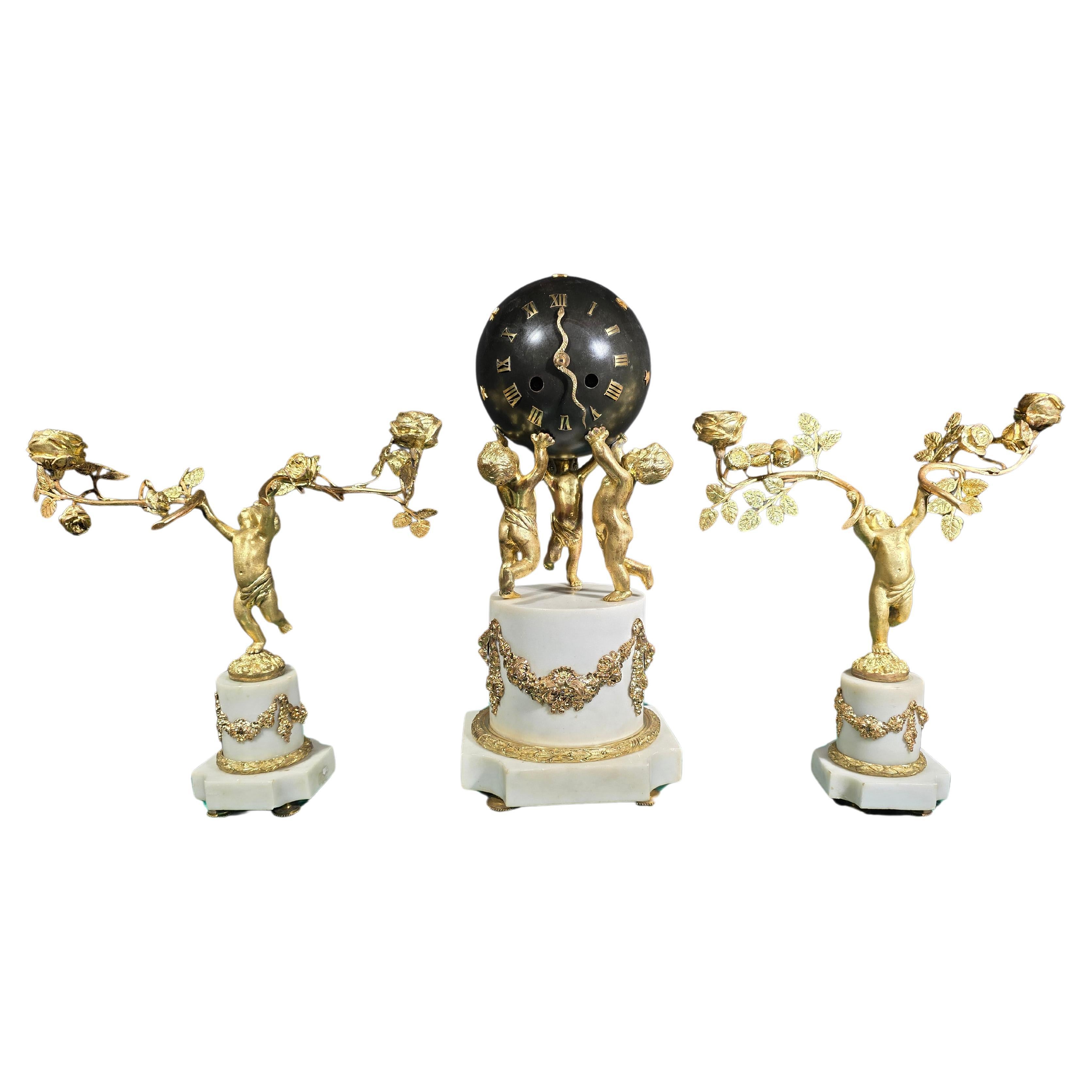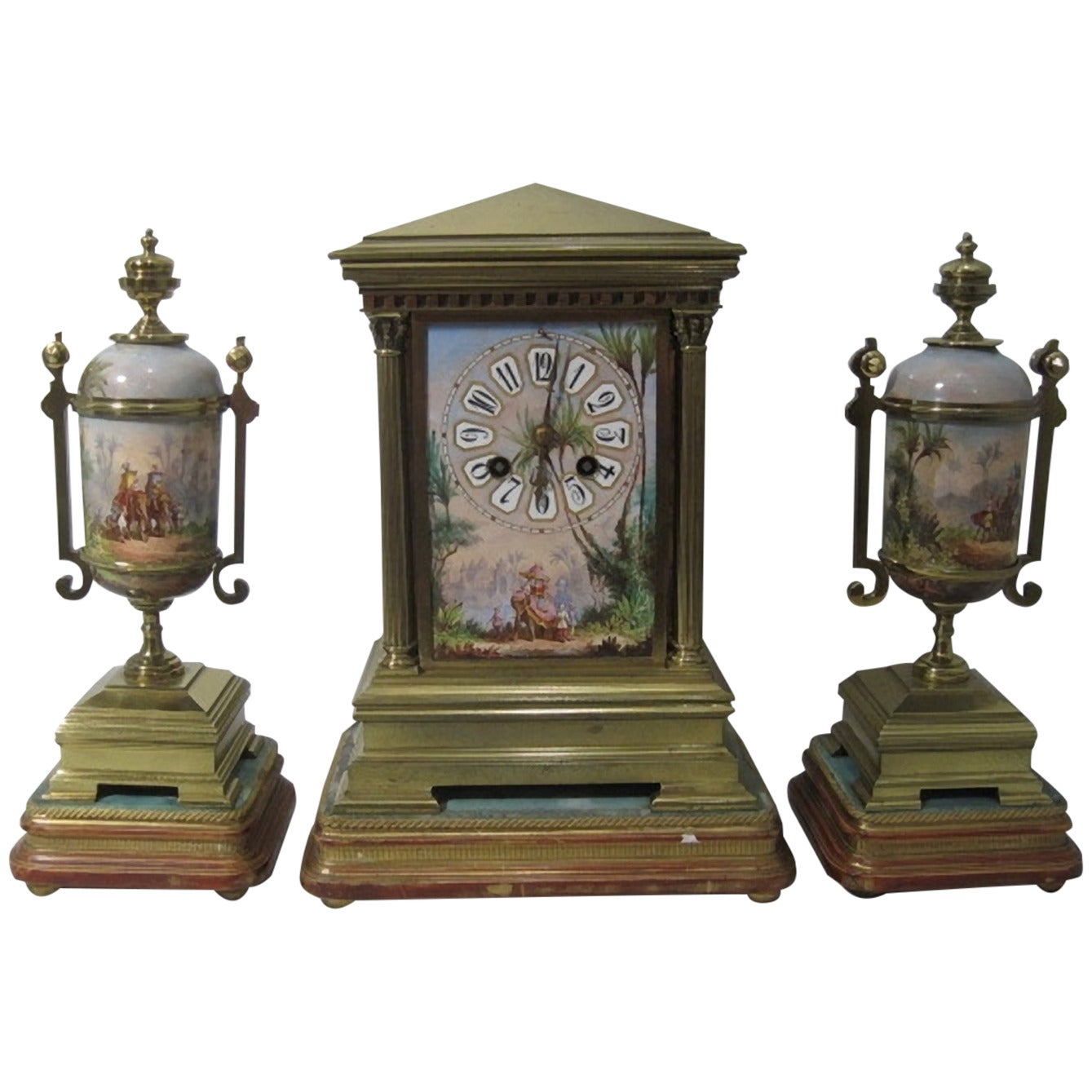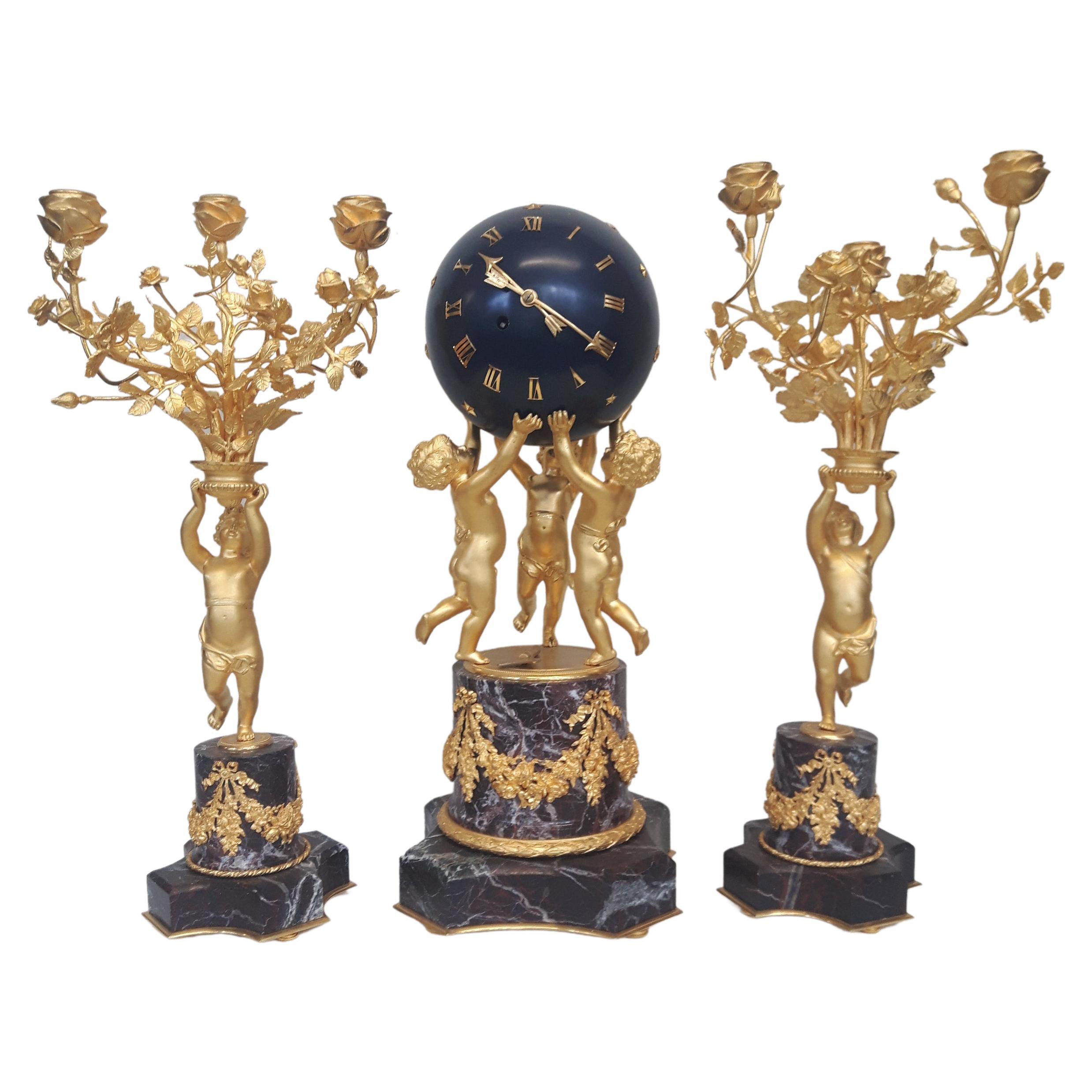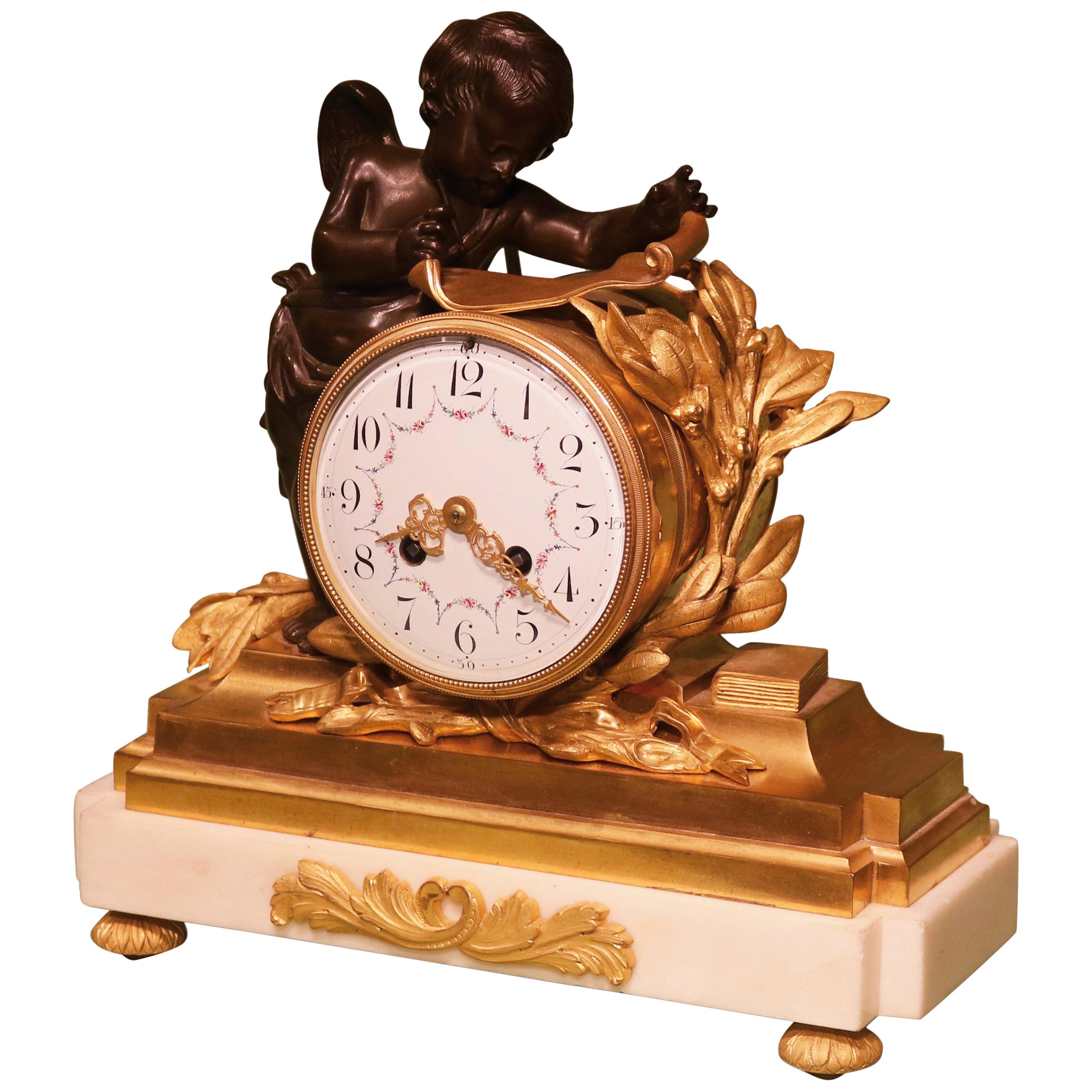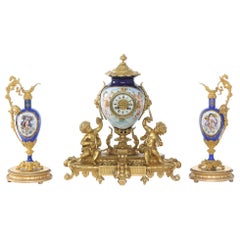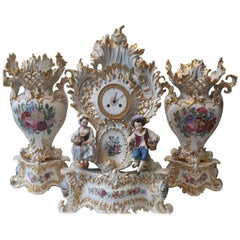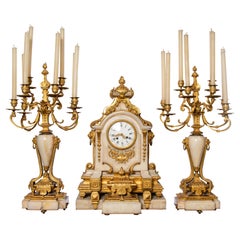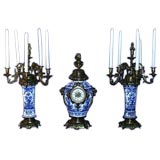
19th century Delft porcelain and bronze garniture clock set
View Similar Items
1 of 2
19th century Delft porcelain and bronze garniture clock set
About the Item
- Dimensions:Height: 26.5 in (67.31 cm)Diameter: 16 in (40.64 cm)
- Place of Origin:
- Period:
- Date of Manufacture:19th Century
- Condition:
- Seller Location:Los Angeles, CA
- Reference Number:Seller: 118901stDibs: U0412307950455
Authenticity Guarantee
In the unlikely event there’s an issue with an item’s authenticity, contact us within 1 year for a full refund. DetailsMoney-Back Guarantee
If your item is not as described, is damaged in transit, or does not arrive, contact us within 7 days for a full refund. Details24-Hour Cancellation
You have a 24-hour grace period in which to reconsider your purchase, with no questions asked.Vetted Professional Sellers
Our world-class sellers must adhere to strict standards for service and quality, maintaining the integrity of our listings.Price-Match Guarantee
If you find that a seller listed the same item for a lower price elsewhere, we’ll match it.Trusted Global Delivery
Our best-in-class carrier network provides specialized shipping options worldwide, including custom delivery.You May Also Like
19th Century Porcelain Gilt Bronze Three-Piece Garniture
Located in Tarry Town, NY
19th century Regency revival porcelain with gilt bronze mantel clock on stand with a pair of neoclassical revival ormolu mounted one handled am...
Category
Antique Early 1800s French Regency Revival Mantel Clocks
Materials
Bronze
Fine 19th Century Clock Set Garniture by Jacob Petit
By Jacob Petit
Located in London, GB
An elegant Rococo garniture by Jacob Petit, Paris, circa 1860. The clock is elaborately hand-painted with flower cartouches, as are the matching vases and a pair of Meissen style figurines, depicting gardners adorn the foot of the clock. The clock and its matching vases with their lattie-edged rims rest on bases rather than on porcelain feet.
Category
Antique Late 19th Century French Rococo Table Clocks and Desk Clocks
Materials
Porcelain
19th Century French Louis XVI Clock Garniture with Sévres Porcelain and Ormolu
By Arnold & Lewis 1
Located in London, GB
A Garniture de Chemineé in the Louis XVI taste
By Arnold & Lewis (late Simmons)
The mantle clock, and its two matched vases, are constructed in jewelled 'Sèvres' style porcelain, hand and polychrome decorated, with gilt highlights and finely gilt bronze. The clock, rising from toupie feet, supports a rectangular base frame with rounded ends, set with cast stiff leaf decoration, and having inset Roi de Bleu and gilt work panels; over, the circular porcelain dial, signed by the maker (qv) has Roman numerals and blued steel hands, and is set over a central porcelain panel with a bucolic scene, and flanked by elliptical female portraits; the ends are curved and conformingly polychrome and gilt decorated; the whole is surmounted by a decorated twin handled urn, having a pine cone finial, set on an addorsed acanthi gilt bronze base. The two train clock...
Category
Antique Late 19th Century French Louis XVI Garniture
Materials
Bronze
Gilt Bronze and Marble Garniture, Clock Signed Raingo Fres, France, 19th Century
By Raingo Frères
Located in Buenos Aires, Buenos Aires
Gilt bronze and marble three piece clock garniture. Clock signed Raingo Fres. France, 19th century.
Clock works.
Clock dimensions: 71 cm height, 46 cm ...
Category
Antique Late 19th Century French Neoclassical Garniture
Materials
Marble, Bronze
Garniture, clock and candelabra. Bronze, porcelain. France, 19th century.
Located in Madrid, ES
Garnish with clock and candelabra in porcelain and gilt bronze. France, 19th century.
Mechanism in perfect working order.
Fireplace garnish composed of a clock and two five-light candelabras, all three pieces made by combining gilt bronze, with relief elements and round bulges and cold-chiseled details, and porcelain decorated with low-temperature enamels, including gold enamel. The porcelain pieces follow models from the Sèvres National Manufacture of the 18th century, with large pictorial cartouches on a cobalt blue background adorned with golden plant motifs. The set follows a historicist design that combines baroque and neoclassical elements with enamelled scenes of Rococo inspiration, representing landscapes and scenes with mythological themes alluding to the arts and the goddess Venus. The clockwork is stamped “Chles. MT”, with serial number 17420. The main glazed porcelain plates are signed DP Boncher. The clock follows an architectural structure, with an oval base with a prominent front in plan, raised on four molded feet in the shape of a top, on which a large ornamental vase is placed. This plinth has a distinct pinto and, above it, a main body as a façade, with a circular pediment that houses the clock face. This includes black enamelled Roman numerals on white medallions with a gold border, arranged around the central representation of a putti reclining among clouds, holding a floral garland and accompanied by musical instruments. Among the medallions that house the numbers, a small jeweled decoration that evokes pearls and embedded rubies, which is echoed in the secondary areas of the body of the piece and also the vase, always combined with delicate golden filigrees.
On both sides of the sphere are two female portraits of ladies from the 18th century, in oval frames. Below, a classically inspired scene with a muse holding musical instruments, probably Euterpe or Erató, accompanied by a putti reading a sheet of music. On the sides of the clock body, two large curved rectangular plates house highly pictorial enameled landscapes, worked with the same miniaturist precision as the rest of the enameled cartouches. These are landscapes of romantic heritage, again inspired by the 18th century, with ideal settings for a twilight atmosphere, featuring classical ruins. The vase that tops the body of the clock has a hemispherical tank, shoulders ending in an edge, an openwork truncated conical neck, which opens smoothly towards the shoulders, and a domed lid, also openwork. The handles are figurative, in bronze, with two female sisters crowned with flowers, of clear Greco-Latin inspiration, worked in a round shape. In the tank, the vase houses two enameled porcelain cartouches, the front one with two putti and a dove - a symbolic allusion to Venus - and the back one with musical instruments. The design of the clock is completed by two thick bronze S-shaped plant braces, under the vase, and counter moldings and plant motifs cast in relief and cold chiseled, combining matte and polished finishes. The candelabras follow a similar design, with large vases of neoclassical design on pedestals, in this case cylindrical, raised on four low feet of turned design. The bases house porcelain cartouches with scenes of putti related to the arts; In one of them we see two putti practicing painting, and in the other two others in a scene related to classical lyric poetry, with one putto writing while the other, holding a lyre, raises a laurel wreath above his head. The cartouches that occupy the front of the candelabra vases...
Category
Antique 19th Century French Neoclassical Revival Mantel Clocks
Materials
Metal, Bronze, Other
Gilt-Bronze and Cloisonné Garniture. France, 19th Century
Located in Buenos Aires, Buenos Aires
Gilt-bronze and cloisonné garniture, France, 19th century.
Clock works.
Category
Antique Late 19th Century French Louis XVI Table Clocks and Desk Clocks
Materials
Bronze, Enamel
